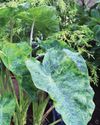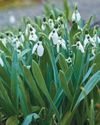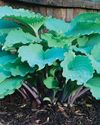
TO BE SURE YOU ENJOY your homegrown vegetables at peak quality and flavor, you must know when to harvest them. Plus, regular harvesting of crops like peas and beans increases yield, with the plants producing new flowers and pods for a longer period of time.
There are several indications that it's time to harvest crops. These include the size and color of the plant, fruit or pod, and the nearing of the crop's "days to maturity." Listed on the seed packet, days to maturity is the average time needed for a vegetable to go from seed to harvest. The seed packet or transplant tag should also describe the visual clues that suggest the crop is ready to pick.
While precise details can vary between varieties, there are also commonalities. Here are my guidelines and advice for harvesting 18 favorite homegrown vegetables:
SNAP BEANS
Snap beans, both bush and pole varieties, are ready to pick when the pods measure between four and six inches long. For the highest quality pods, harvest before the interior seeds start to swell. Pick every day or two to promote maximum production.
BEETS
Tender baby beets are ready when the roots reach the size of a golf ball. Gently brush soil away from the top of the root to gauge its size. If it’s one-and-a-half to two inches across, harvest. If you intend to store your beets for winter meals, wait until they reach maturity. The roots of most beet varieties mature at three to four inches in diameter.
BROCCOLI
Diese Geschichte stammt aus der July - August 2023-Ausgabe von Horticulture.
Starten Sie Ihre 7-tägige kostenlose Testversion von Magzter GOLD, um auf Tausende kuratierte Premium-Storys sowie über 8.000 Zeitschriften und Zeitungen zuzugreifen.
Bereits Abonnent ? Anmelden
Diese Geschichte stammt aus der July - August 2023-Ausgabe von Horticulture.
Starten Sie Ihre 7-tägige kostenlose Testversion von Magzter GOLD, um auf Tausende kuratierte Premium-Storys sowie über 8.000 Zeitschriften und Zeitungen zuzugreifen.
Bereits Abonnent? Anmelden

Pot It Up
Shake up the containergarden with theseNorth America –native perennials

THE GARDEN PATH TO PERDITION
I WAS CRUISING RIGHT ALONG, feeling okay about myself, when I came across a list of the Seven Deadly Sins.

A Productive PATIO
Tiny fruit, vegetable and herb plants help gardeners maximize any sort of growing space

TROPICAL FUSION
A FUSS-FREE APPROACH TO USING BOLD TROPICAL PLANTS IN ANY TEMPERATE GARDEN

WINTER READING
Pass the time with any of these inspiring books

SENSING A PATTERN
Greg Coppa reflects on an odd weather year and what continued warming may mean for his Rhode Island garden

TOP-PRIZE PERENNIALS
A foliage masterpiece for shade and a late bloomer for sun

MARK WESSEL
What's new for fruit and vegetable gardeners?

KINGS OF THE NORTHERN FORESTS
A look at the trees, shrubs and perennial plants that bolster life in Ecoregion 5

PROJECT FEEDERWATCH
Gardeners can help scientists know just where the birds are in winter